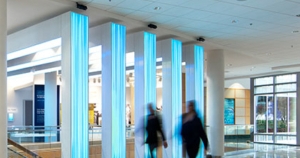Museums in 2018 find themselves in a thorny position. The American Alliance of Museums, an industry advocacy group, reports that more people attend museums each year than all major professional sporting events combined. Despite that, museum attendance overall has waned over the recent short and long term even as high profile museums cut their prices of admission -many eliminating the cost entirely. The reasons behind this decline aren’t explicitly clear but it seems reasonable to suggest it might stem from a lack of technological adaptability. Perhaps museums are living up to their stuffy reputation by refusing to evolve as society does.
It may not have been the primary objective in the past for museums to drive attendance, and it still may not be today, but it is now clearer than ever that generating new and repeat visitors is crucial to museum’s survival. Even without the urgency derived from the prolonged dip in attendance, the argument could be made that visitors are the lifeblood of a museum. After all, even if a museum’s purpose remains chiefly educative, what good does a teacher serve without students? A museum without patrons is a mausoleum for culture, not a purveyor of it. Fulfilling their role in society is thus dependent upon engaging members of society, a mission that demands museums retool their approach as generations come and go. In today’s age, that means integrating into the visitor experience technologies that resonate with younger and digitally fluent generations. As other academic institutions like colleges and universities have proven, the best way to do this is with immersive museum LED displays.
Digital Signage Solutions for a Digitally Fluent Audience
Studies show the generation of young people currently coming of age values experiences more than commodities, and prioritizes the importance of collaboration. Schools have tapped into this value system by integrating digital display technology that facilitates this dynamic kind of experiential interactivity. Museums should follow suit. In fact, many already are. Earlier this year, Seph Bradley of Hyperallergic, an online arts and culture monitor, wrote that, “across the field, in museums, art institutions, performance forums, and even historical societies, the visitor’s experience is now being personalized.” What he means by this is that museums are finally tailoring their offerings to align with the interests of modern consumers, and they are using LED display tech to do so. By integrating interactive and immersive LED display solutions, museums give visitors the ability to impart their own meaning onto their museum experience. It is no longer necessary for a curator to walk a guest step by step through exhibits; current generations of museum-goers prefer to explore on their own. As Bradley wrote, “[v]isitors are no longer passive receptacles for the curator’s knowledge, but rather active, engaged participants.”
A beautiful illustration of LED display tech in action can be found at the Strong National Museum of Play in Rochester, New York. This museum–as the name implies- strives to show their visitors the value of play, which of course means their audience will skew younger. To engage these exuberant visitors, the Strong installed a giant LED videowall that broadcasts colorful content designed to delight and surprise. The display reinforces that the museum knows their audience and is fully invested in engaging them. It also shows a willingness to evolve, and an acceptance that while their overall mission has not changed, the tools of the trade have.
Engaging Audiences with Era-Appropriate Technology
The applications for LED display tech in museums are potentially limitless. Smaller displays are perfect as wayfinding guides, while larger installs bring remarkable utility in promoting new exhibits and events. Audiences will find display features like these everywhere else in their life so to avoid being perceived as antiquated museums need to keep up. These more standard applications for LED display tech will show a baseline level of commitment to engaging younger generations, but to really make an impact museums are integrating LED tech into the exhibits. A core goal for museums has always been to surround their visitors in the subject matter in hopes of transporting them into whatever world or time period the museum covers. Museums have usually done this with static exhibits but modern galleries are using museum LED displays to present dazzling digital recreations that audiences can interact with directly. Curved tunnels of LED can immerse a visitor in an underwater shipwreck, while a room blanketed with digital wallpaper can transport a guest into a medieval castle.
A few decades ago, most museums agreed their purpose was generally educative: That is, visitors were expected to have an already established academic interest in the museum’s subject matter and the curators sought to cater that interest. Visitors came explicitly to learn, and museums existed to teach. Dropping attendance indicates that arrangement is no longer working for consumers, who crave the ability to engage on a more interactive level. By integrating museum LED displays into their space, museums can inspire visitors with the interactive experiences they prefer while still impressing learnings upon them. Teachers have long known that not every student learns the same way. Museums are finally realizing that not every generation learns the same way either and they are catching up to modern consumers by incorporating era-appropriate display technology.
Find Nanolumens displays at Madame Tussauds Wax Museum, Delta’s Flight Museum, Hy-vee’s Lobby Museum, and Cox Communication’s Discovery Center (pictured above.)

